The 4 L's Retrospective model is a widely used and highly effective technique in agile project management. The 4 L's Retrospective is not just limited to software development; it is versatile and applicable to a range of projects, from marketing campaigns to product launches, making it a valuable tool for enhancing team collaboration and productivity.
What is the 4L's retrospective model?
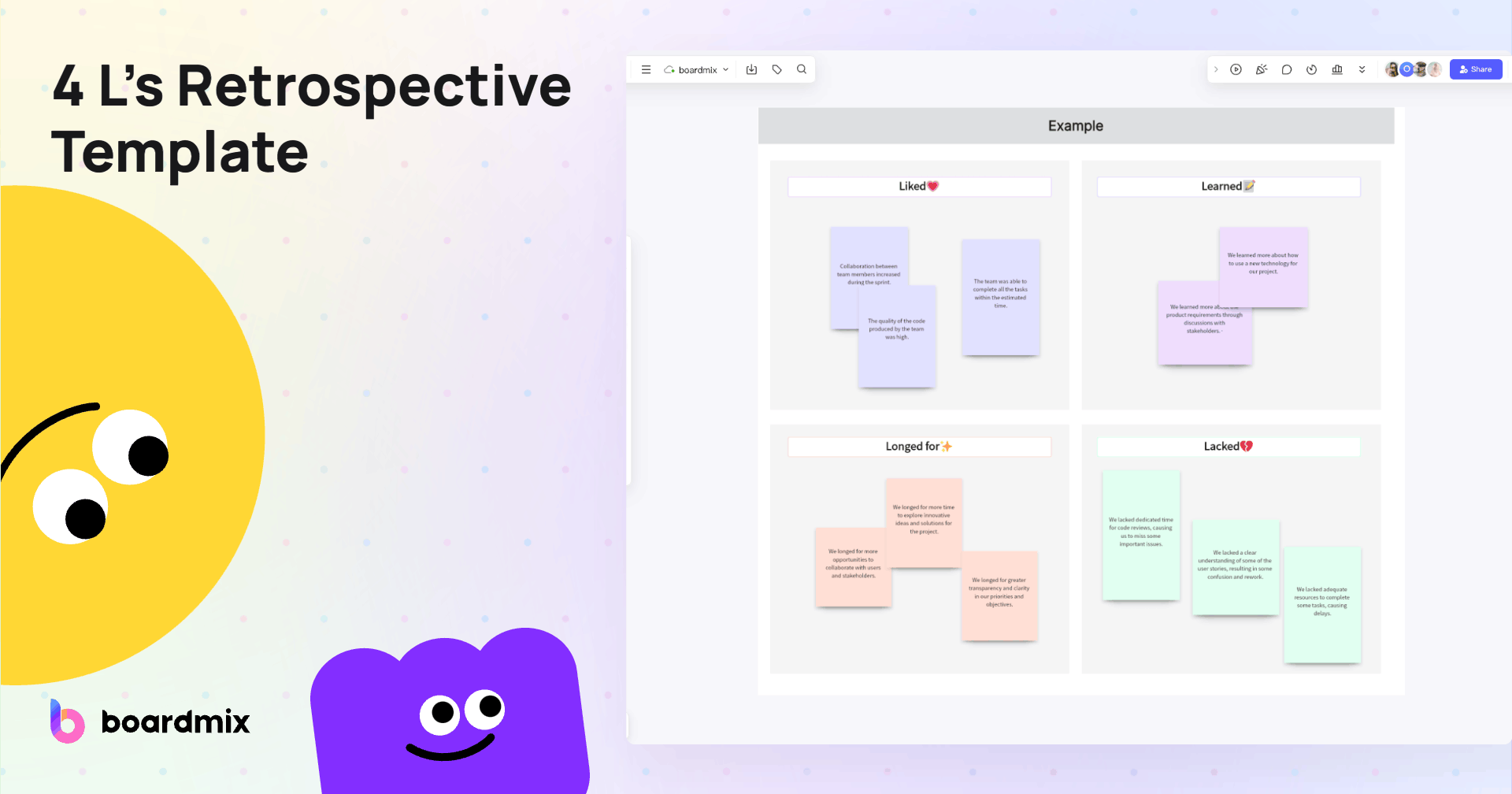
The 4 L's Retrospective model is a structured approach used in agile project management to review and analyze the outcomes of a sprint or project. It is designed to encourage team members to reflect on their experiences and provides a framework to capture different aspects of those experiences. The "4 L's" stand for:
Liked: What did the team enjoy about the last sprint or project?
Learned: What new knowledge or skills were gained?
Lacked: What could have been improved or what resources were missing?
Longed For: What does the team wish had happened or what do they desire for future sprints?
This model helps teams celebrate successes, identify learning points, recognize shortcomings, and express future desires, facilitating continuous improvement and better team dynamics.
How to use 4 L's retrospective technique?
Step 1: Determine application scenarios
Before starting a retrospective, you should understand the scenario and target audience so that participants can understand and accept the content of the retrospective. Meanwhile, the tone of the retrospective can be adjusted according to the user's preferences and personality to make it more consistent with the context. You should explain the purpose of the retrospective and the 4 L's retrospective example to the team, and ensure everyone understands the importance of open and honest feedback. Successful retrospectives happen when the team is fully engaged and committed.
Step 2: Set Up the Space
Whether the retrospective is in person or online, the space must be properly prepared. Add the 4 L's retrospective example to your Boardmix board to get started.
Step 3: Identify the Liked
The first step is to discuss what participants liked about the sprint. This open-ended question aims to uncover positive aspects and understand why they were appreciated. Allow team members to reflect individually and write down their thoughts for each of the 4 L's. Collect these thoughts on sticky notes or digital cards and place them in the corresponding quadrant.
Step 4: Reflect on Learnings
Participants should share what they learned during the sprint, especially from mistakes or challenges. Review and discuss the collected items as a team, and encourage team members to elaborate on their points and discuss underlying reasons. The facilitator should encourage everyone to share, emphasizing that no learning is too small and helping to uncover more lessons.
Step 5: Consider What Was Longed For
The final element involves reflecting on what the team longed for. This could be tangible items like better equipment or intangible needs like more leadership involvement. It's essential to distinguish this from what was lacking and prioritize based on potential positive impact.
Step 6: Follow-Up
Review the action items in the next retrospective to ensure progress and accountability. Ask for volunteers to take on next steps, and if necessary, assign tasks to those responsible for uncovering the insights. Ensure everyone understands their responsibilities and thank them for their participation.
Use Cases: 4L's retrospective examples
The 4 L's Retrospective example can be applied in various scenarios to enhance team performance and project outcomes. Here are some practical examples:
1. Software Development Team:
Liked: The team appreciated the collaborative spirit and the successful deployment of a new feature.
Learned: They discovered a more efficient coding technique.
Lacked: They identified a need for better testing tools.
Longed For: The team wished for more frequent code reviews to catch issues early.
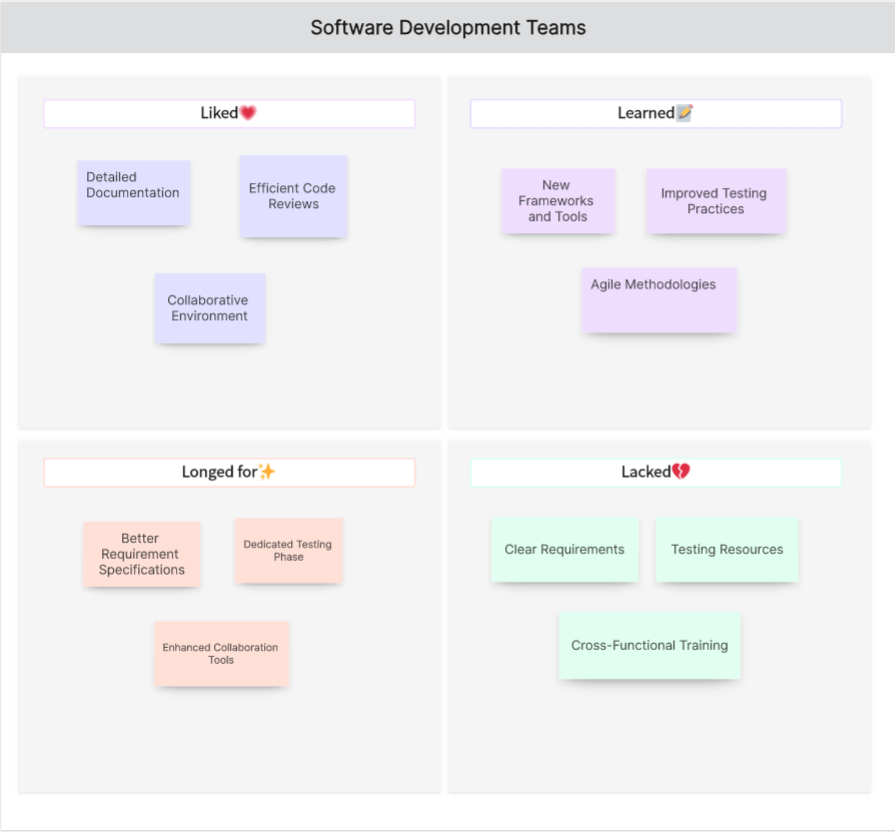
2. Marketing Campaign:
Liked: The creative brainstorming sessions were highly productive.
Learned: The team learned about new social media algorithms.
Lacked: They felt there was insufficient market research.
Longed For: The team desired more budget for paid promotions.
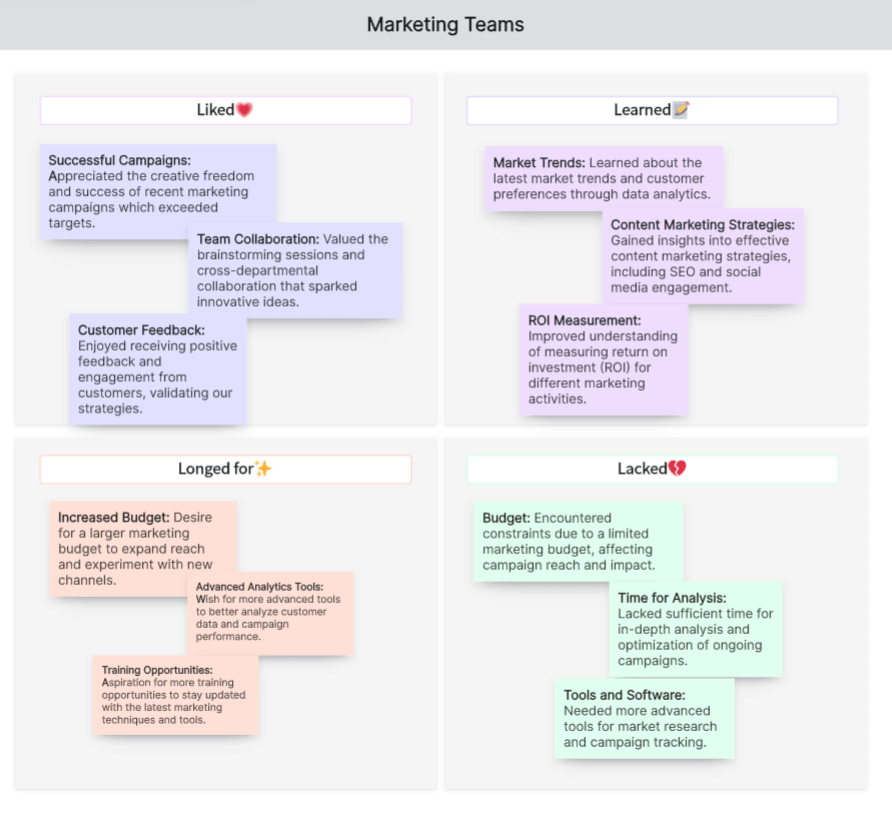
3. Product Launch:
Liked: The launch event was well-received by the audience.
Learned: They gained insights into customer preferences.
Lacked: The team noted a lack of coordination with the sales team.
Longed For: They wished for a more comprehensive post-launch analysis.
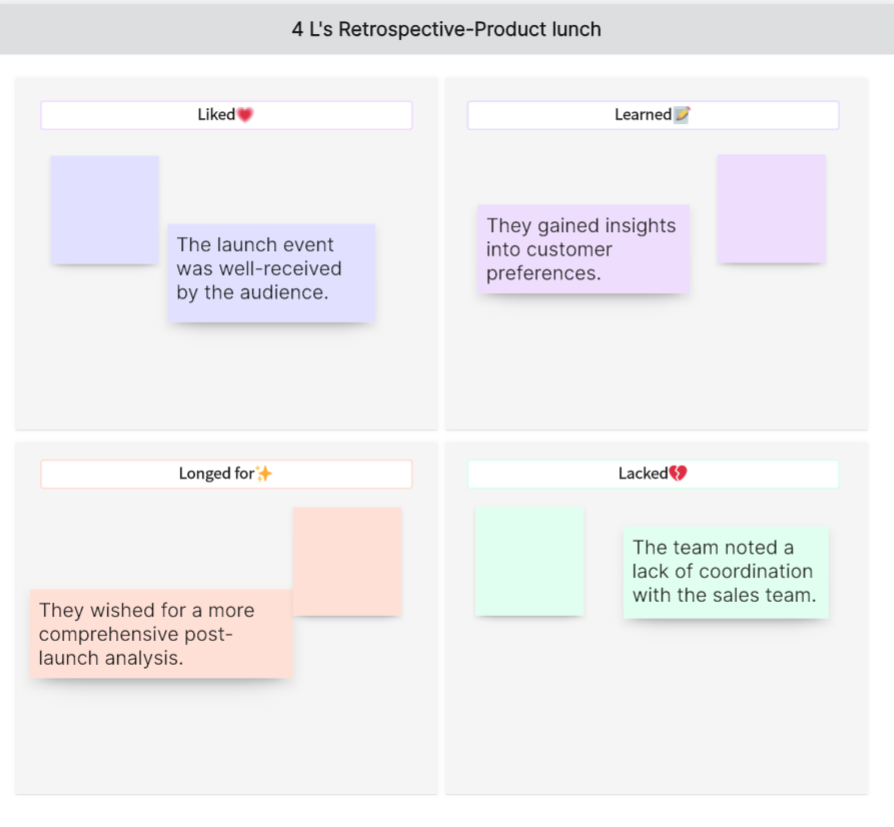
4. Customer Support Improvement:
Liked: The introduction of a new ticketing system streamlined processes.
Learned: The team learned effective conflict-resolution techniques.
Lacked: There was a need for more training on the new system.
Longed For: They wished for better integration with other departments.
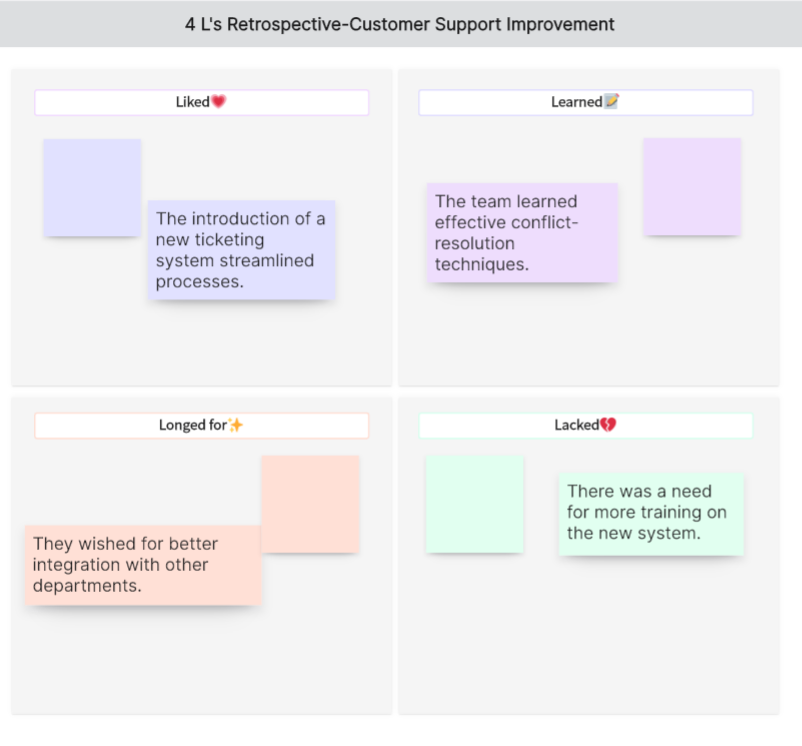
5. Remote Team Collaboration:
Liked: The team enjoyed the flexibility of working remotely.
Learned: They found new tools that enhance remote collaboration.
Lacked: The team missed face-to-face interactions.
Longed For: They desired occasional in-person meetups to strengthen bonds.

Free 4L's retrospective templates
When it comes to conducting effective retrospectives, having the right templates can make the process smoother and more productive. Here are five detailed 4 L's Retrospective templates, each designed to cater to different needs and scenarios.
1. Basic 4 L's Retrospective Template
Application: This template covers the fundamental aspects of the 4 L's model: Liked, Learned, Lacked, and Longed For. It's ideal for teams new to retrospectives or those who prefer a straightforward approach.
Advantages: Its simplicity ensures that all team members can participate without feeling overwhelmed, making it a great starting point for retrospectives.
Suitable For: Teams of any size and experience level, particularly those looking for a basic structure to start their retrospective process.
Work Scenarios: Best used in regular sprint reviews for agile teams, project debriefs, and post-mortem analysis.
2. Interactive 4 L's Retrospective Template
Application: This template is designed to be used with interactive tools like Boardmix, allowing for real-time collaboration and dynamic participation.
Advantages: Enhances engagement and interaction, making it easier to gather diverse perspectives and insights from team members located in different places.
Ease of Use: Features drag-and-drop cards, sticky notes, and visual elements that make the retrospective engaging and interactive.
Suitable For: Remote or hybrid teams that rely on digital collaboration tools.
Work Scenarios: Ideal for distributed teams conducting online retrospectives, virtual project reviews, and brainstorming sessions.
3. Detailed 4 L's Retrospective Template
Application: This template provides more space and prompts for detailed feedback, encouraging deeper reflection and comprehensive input. While slightly more complex, it guides participants through each section with specific questions and prompts, helping them to think critically and provide detailed responses.
Advantages: Promotes thorough reflection and detailed feedback, leading to more actionable insights and improvements.
Suitable For: Teams that are experienced with retrospectives and looking to dive deeper into their analysis.
Work Scenarios: Suitable for complex projects, in-depth sprint reviews, and detailed post-mortem analyses.
4. Visual 4 L's Retrospective Template
Application: This template incorporates visual elements such as graphs, charts, and icons to represent each of the 4 L's, making it visually appealing and easier to interpret. Visually intuitive, this template helps participants quickly understand and fill out their inputs.
Advantages: Helps in quickly identifying patterns and trends, making the data easier to analyze and discuss during the retrospective.
Suitable For: Teams with a preference for visual learning and communication styles.
Work Scenarios: Best for creative teams, design sprints, and any scenario where visual representation can enhance understanding and engagement.
5. Customizable 4 L's Retrospective Template
Application: This flexible template allows teams to customize sections according to their specific needs, adding additional categories or modifying existing ones. Requires some initial setup to tailor the template, but it can be adjusted to fit the unique requirements of any team or project.
Advantages: Offers flexibility to adapt to various scenarios, ensuring that the retrospective process remains relevant and effective for different types of projects and teams.
Suitable For: Teams with unique retrospective needs or those that want to experiment with different retrospective formats.
Work Scenarios: Ideal for teams running specialized projects, cross-functional reviews, or experimental workflows.
How to run a 4 L's retrospective in Boardmix?
Boardmix is an excellent tool for running a 4 L's Retrospective, especially for distributed teams. Here’s how to do it:
Create a New Board: Begin by logging into your Boardmix account and creating a new board for your retrospective.
Set Up Columns: Once your board is ready, set up four columns or sections and label them as "Liked", "Learned", "Lacked", and "Longed For".
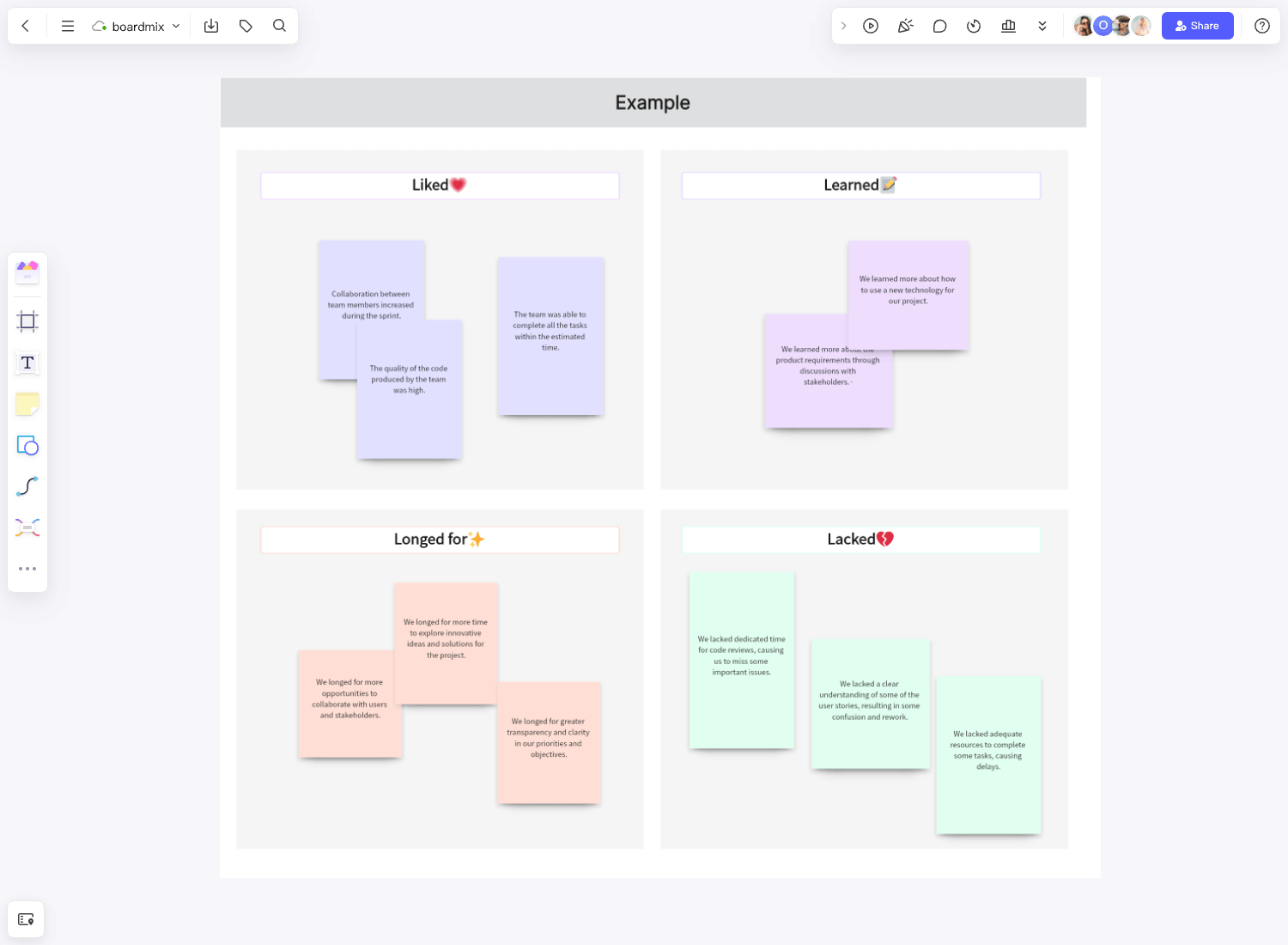
Invite Your Team: Invite your team members to the board. You can do this by sharing the link to the board or inviting them via email.
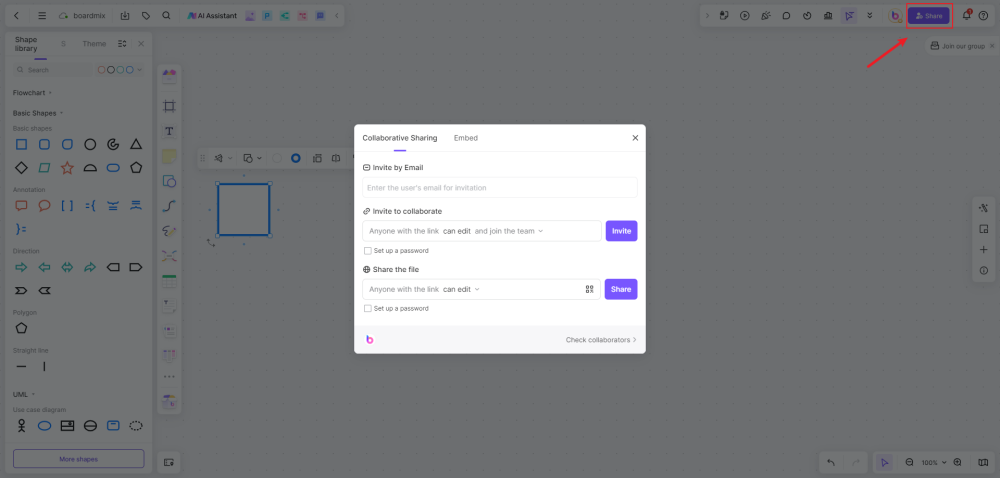
Add Cards: Ask each team member to add cards under each column based on their experiences during the project or sprint. Each card should represent one point or idea.
Discussion: Once everyone has added their points, start discussing each one as a team. You can go column by column, starting with what the team liked, then moving on to what they learned, what they lacked, and finally what they longed for.
Action Items: Based on the discussion, identify action items for improvement and assign them to relevant team members or groups.
Follow-Up: After the retrospective, make sure to follow up on these action items in your next project or sprint to ensure continuous improvement.
Remember that the goal of a 4 L's retrospective is not just to identify problems but also to celebrate successes and learn from both positive and negative experiences. It's all about fostering open communication and continuous improvement within your team.
So that's how you can run a 4 L's retrospective in Boardmix! If you have any other questions or need further clarification, feel free to ask.
What is an alternative to the 4L retrospective?
While the 4 L's Retrospective is highly effective, other models can also provide valuable insights:
1. Starfish Retrospective
- Focuses on five categories: Start, Stop, Continue, More of, and Less of.
- Helps teams to balance their feedback by considering actions to start or stop, as well as things to increase or decrease.
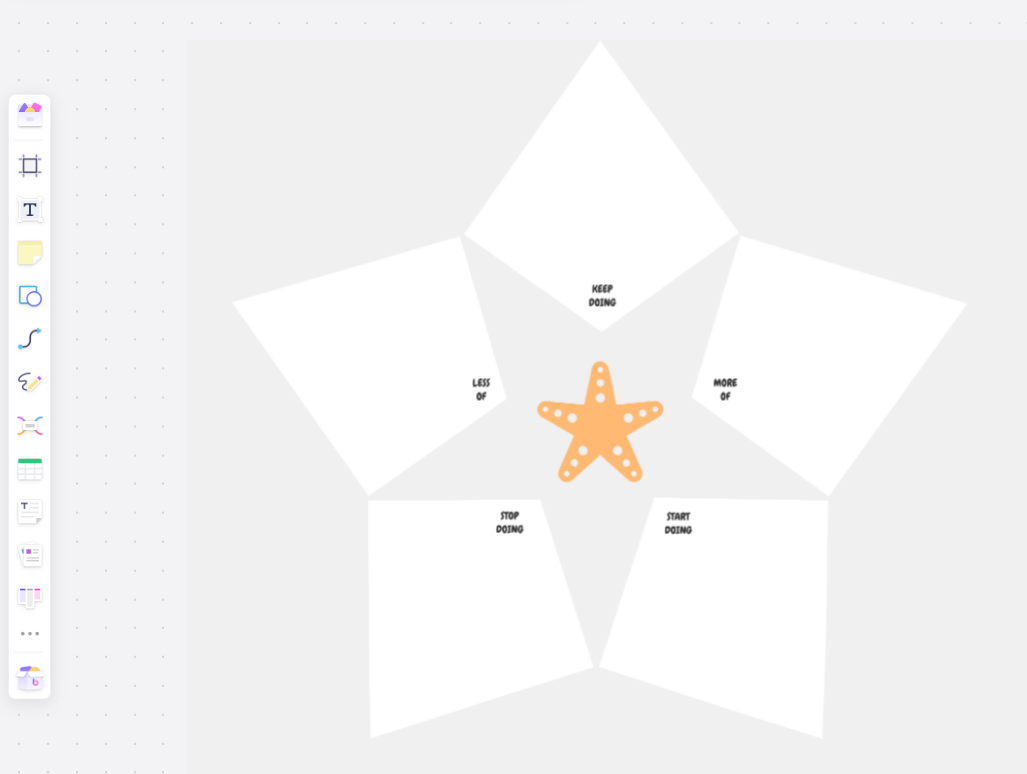
2. Sailboat Retrospective
- Uses the metaphor of a sailboat to explore what propels the team forward (wind), what holds them back (anchors), and potential risks (icebergs).
- Encourages teams to think metaphorically about their journey and obstacles.
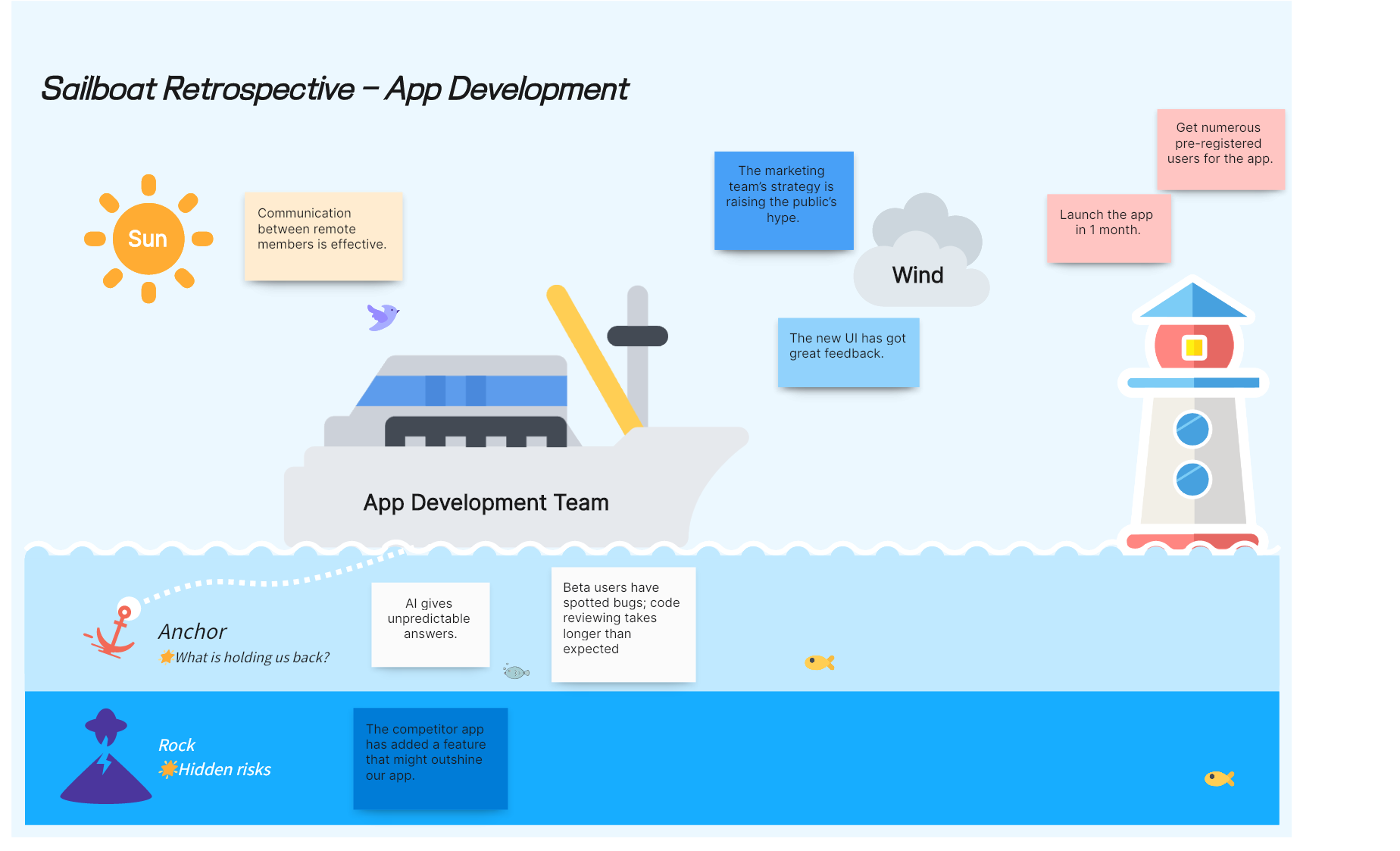
3. Mad, Sad, Glad Retrospective
- Categories feedback into emotions: what made the team mad, sad, or glad?
- Helps in addressing the emotional aspects of team dynamics and project work.
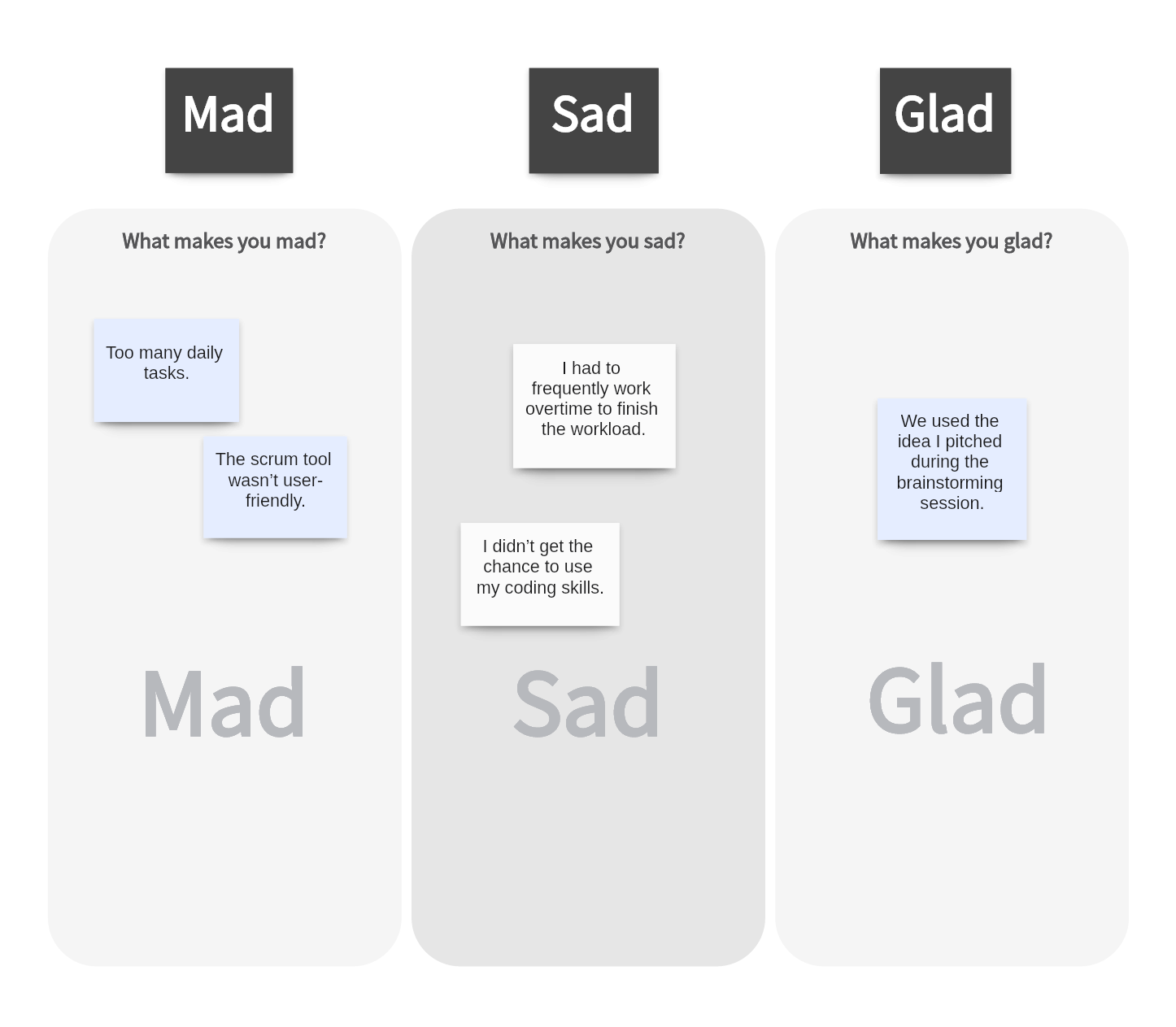
4. Stop, Start, Continue Retrospective
- Simple and direct, focusing on what the team should stop doing, start doing, and continue doing.
- Effective for quick reflections and actionable outcomes.

These alternatives provide various ways to capture feedback and foster continuous improvement, allowing teams to choose the model that best fits their context and objectives.
Conclusion
The 4 L's Retrospective model is a versatile and effective tool for agile teams to reflect on their work and continuously improve. By understanding the basics of the model, applying practical techniques, and using templates, teams can enhance their retrospective meetings. Tools like Boardmix facilitate the process, especially for remote teams. While the 4 L's model is powerful, exploring alternative retrospectives can provide additional insights and approaches to continuous improvement. Embracing these practices leads to more productive, cohesive, and adaptive teams, ultimately driving project success.








